We are excited about the Brazilian coffees we have coming in this year. We have a group of 6 producers, mostly small to medium and one larger in size that we are working with consistently and have agreed on fair prices that are not determined by the current market price. These producers are committed to producing quality and developing their production as well as being sustainable businesses, and working with us for the long haul. They are all working on improvements, in different way across their production and we have some different preps available. Join us in supporting them and pop over to our offer list to check out our Brazilian coffees.
- Marcio (Cetec farm) explaining his process of drying cherry in boxes with hot air. How the temperature is measure at the furnace and inside the coffee with a probe, the temperature of the furnace should not exceed 42 degrees Celsius and the temperature inside the coffee should not be more than 35 degrees Celcius.
- Deon a picker at Capodocia farm. Coffee picking although not lucrative is a valued income for a lot of people from the interior of Brazil. These pickers have traveled 2000 km to work on Augusto’s farm and will stay in housing on the farm for the season before they return home.
This was the first time I have visited Brazil in July, it was noticeably different. Usually we are visiting around Sep/Oct to cup and make a selection from the producers we are building relationships with. So it was about time I came to see the harvest and work that different producers are doing in their production. It was immediately evident that the climate in July is quite different to what I had experienced before, with much colder temperatures. There are clear differences in the way coffee is produced in Brazil, when I compare it to the other countries we are working in. While Brazil produces roughly a third of the coffee produced in the world, the prices for Brazilian coffee are entirely based on the C market. Making the industry in Brazil a victim of the variation in the C market. This has a huge impact on the coffee being produced in Brazil, and we should consider this when we have expectations of what these coffees are and what they could be.
We have intended to have a clear and defined concept for buying coffees from Brazil, because there are a lot of coffees available and it is very easy to buy straight off of the cupping table from year to year without developing a clear direction or commit to a concept. This is not so interesting for us. We have seen that our market needs tasty, traceable Brazils that are good value and in larger volumes, while we also see that there is a lot of potential for Brazilian coffees to be more. We wanted to both look for what our customers need and display what happens when producers are able to invest a little in their production. Out of this we have built a concept based on a break down of two main product types and a commitment to work in this way with the same producers each year.
- 50-100 bag lots from a single farm, that cup at a good level and provide a tasty, clean and sweet coffee that is versatile for our customers. We have committed to pay a stable and agreed upon price to the producer.
- 10-30 bag lots from single farm, that cup at a higher level with distinctive characteristics that make these coffees stand out above others on the table. Often where the farmer has done additional investment in preparation; picking, processing, or drying. We have committed to pay a premium based on the additional investment from the producer and the cup quality.
We are asking all of the producers we work with who have the capacity, if we can work across both product types. So that we can add value with bigger volumes and also give premiums that encourage production of these coffees that can surprise and outstand us all.
- Rodrigo on his farm Sitio Cachoeira. His farm is medium in size at 30 hectares, and is spread across the hillside of Mantiqueira de Minas. This makes it difficult for him to harvest any other way than through manual picking. His total production is around 200 bags.
- Augusto (Capodocia farm) laughing at me because I am not sure I believe is assessment of drying cherry on raised beds in this region of Brazil. He is telling me that the layer of coffee has to be thick in order for the cherry to maintain the heat they absorb in the daytime and to not drop too much in temperature over the cold nights. The proof is in his coffees which we think are pretty tasty!
Effects of the C-market
The clearest difference I have experienced in visiting coffee producers in Brazil as opposed to producers in other producing countries, is the attention that Brazilian producers pay to their cost of production. Every change or adaptation of their production is run through their minds to first consider the potential additional cost that will be incurred. This is unsurprising when the pricing structure for most of the coffee in Brazil is heavily based off of differentials from the C market that reflect the quality of the coffee. For example a commercial coffee with a particular profile, without traceability or any certification, and that an exporter could create at any time and can be available by the container load (320 bags) would be priced at between +25 to +30. This is cents per pound above the current commodity market price. The C market is currently at 96.70c/lb (19.09.2018).
Both the movement of the C market and fluctuations in the exchange rate between R$ and US$ heavily impact the price a producer will get paid for their coffee. The C market currently shows a reduction in value for coffee of approximately 20% from last year this time, but at the same time the R$ has weakened against the US$. Meaning the US$ value in R$ has increased by approximately 32%. This has largely served to negate the effect of a falling coffee market on the price a farmer will receive in local currency. As an example in a comparison we did from a specific, dated price point in 2017 to the same dated price point in 2018, fluctuations in the value of the C market and the exchange rate showed a variation of between 6% and -6% difference in the price in R$ to the producer. This does not account for the increase in inflation, and this was seen to jump dramatically in 2018 to 4.48%. There are also costs that will be paid in US$, these costs will increase dramatically for producers in the current market.
In addition to this production costs in Brazil are driven up by increased inflation and the general cost of labour. Minimum wage is high in relation to other coffee producing countries as the cost of living in Brazil is high. Minimum wage is currently at R$954 per month, which is the equivalent of 2 bags of average coffee. This amount is what has to be paid directly to the employee while there is the additional cost of taxes for the employer. Minimum wage including taxes would be approximately R$1220 per month.
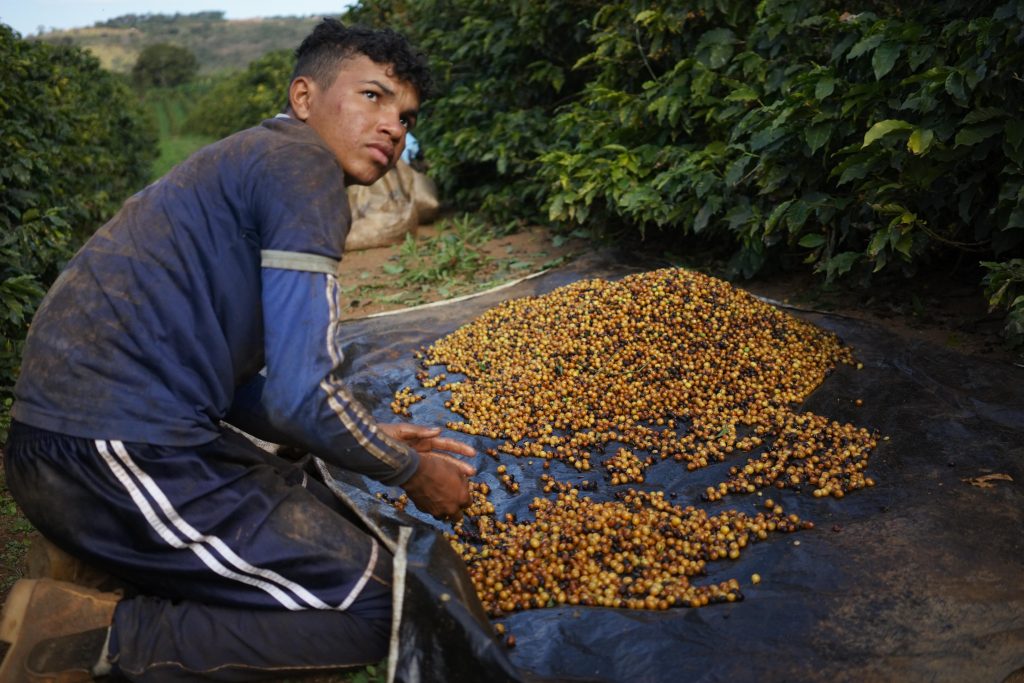
Additional sorting is still done after the cherries are picked to remove any cherry that are over or under ripe. The pickers at Capodocia farm work for three months of the year, each picker will receive R$10,000 for this period and will be given housing for the three months they spend working on the farm.
As is evident there is little room to spare for coffee producers to actually make money, many larger producers can offset the costs of production against the volumes they are producing. But the small to medium sized producers we work with are at much higher risk in a market like the current one of just not being viable businesses.
There is value in both large and small to medium producers, we have also found great coffees from larger producers who in reality can often offer coffees at lower prices. The point is that if we want a diverse range of coffees and the expression of these different kinds of products we have to be committed to support producers with prices that make sense given their production. We have to take into account the environment the coffee is produced in, the kind/size of producer, the additional investment being made in the production and the cup quality.
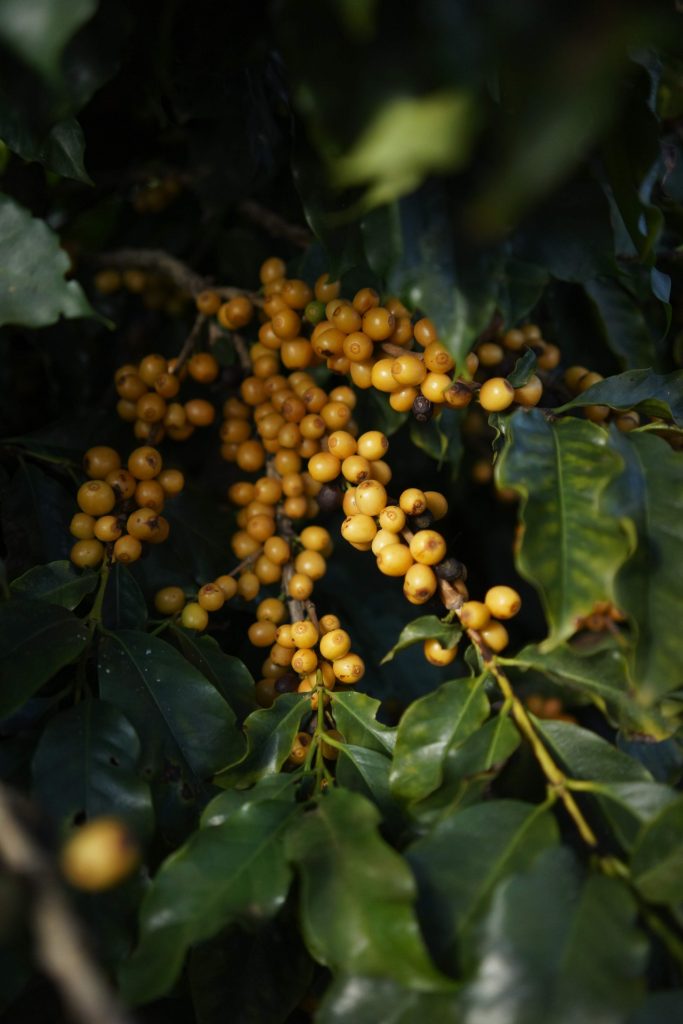
Beautiful yellow Catuai at Capodocia farm, it is not always that cherries ripen so uniformly on the tree. You can see one or two green cherries in the back and five or so overripe cherries among the yellow cherries. This is one of the aspects of the harvest that is difficult for producers to manage, and particularly in Brazil where labor is expensive and the costs can quickly out way the prices these coffees fetch in the market. Augusto is a true believer in selective picking.
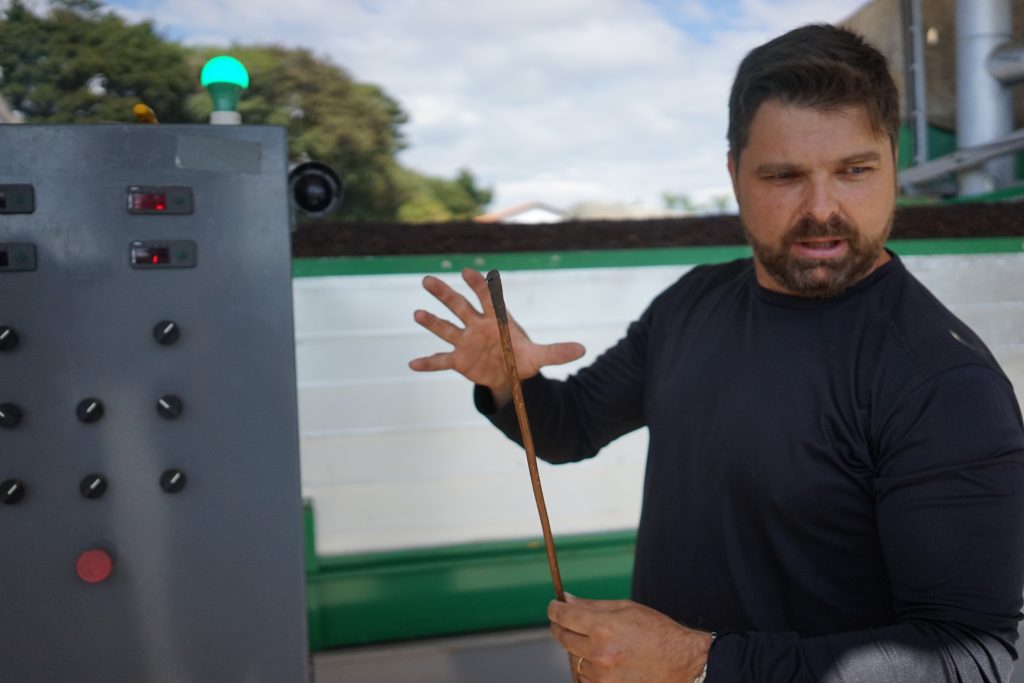
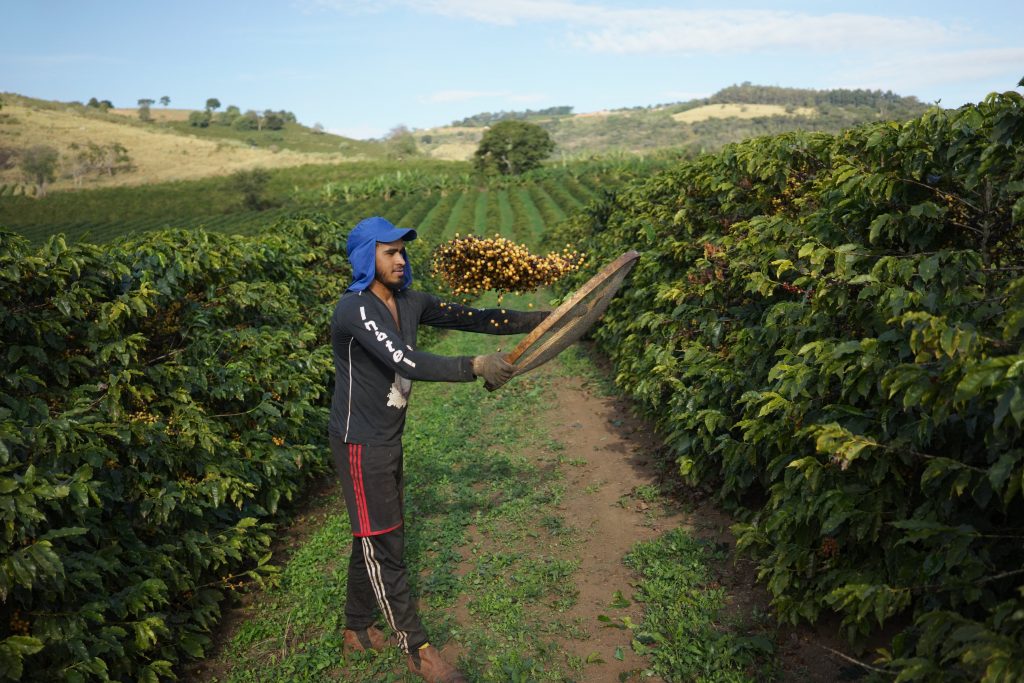
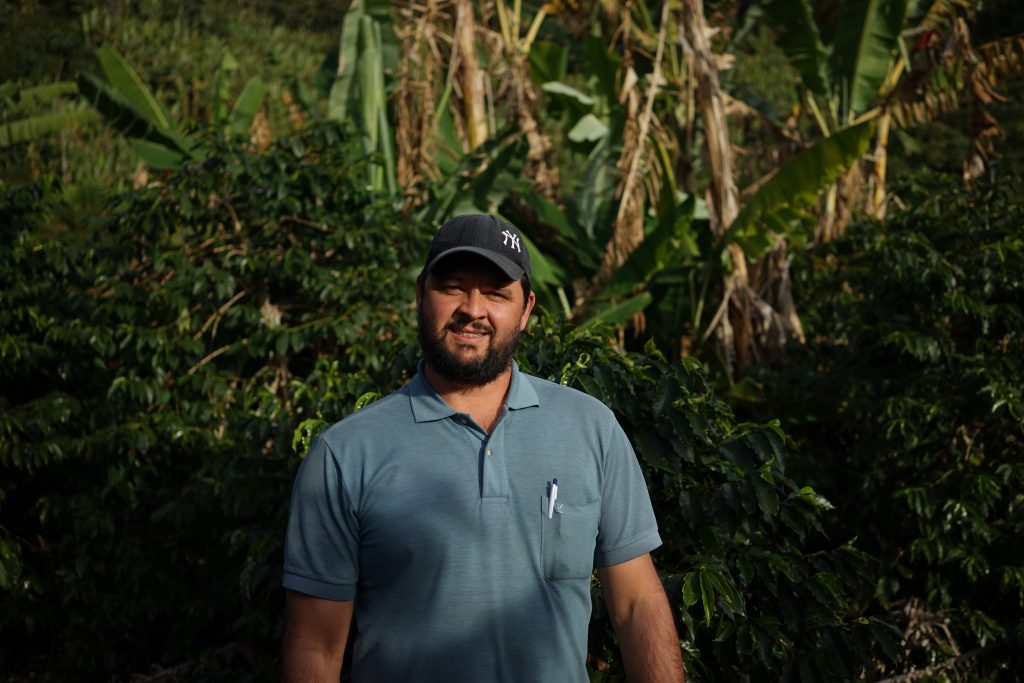
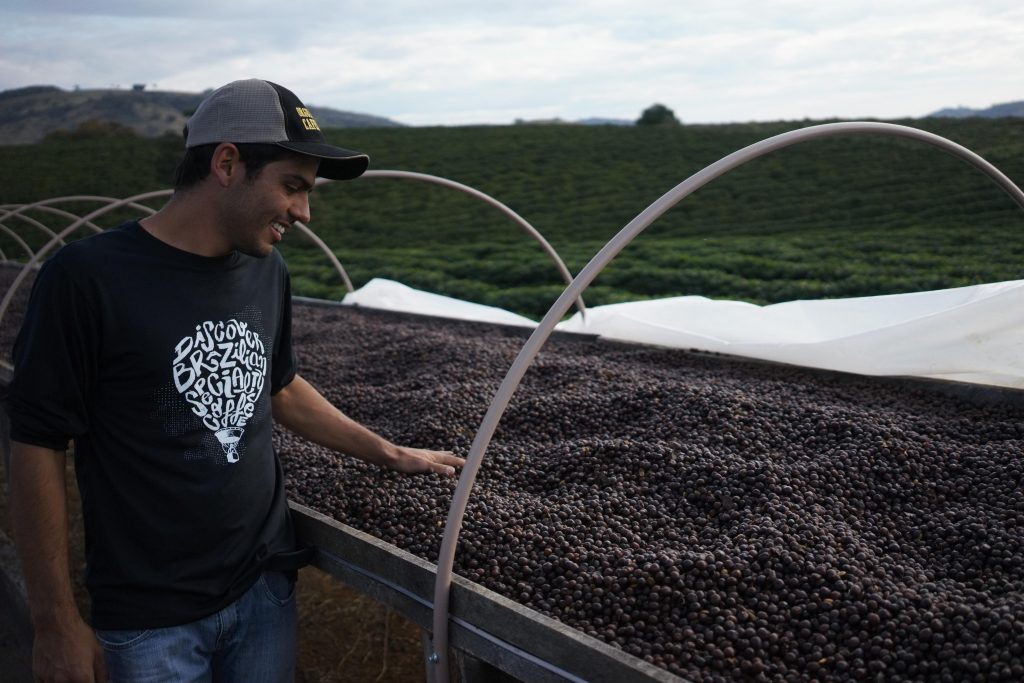
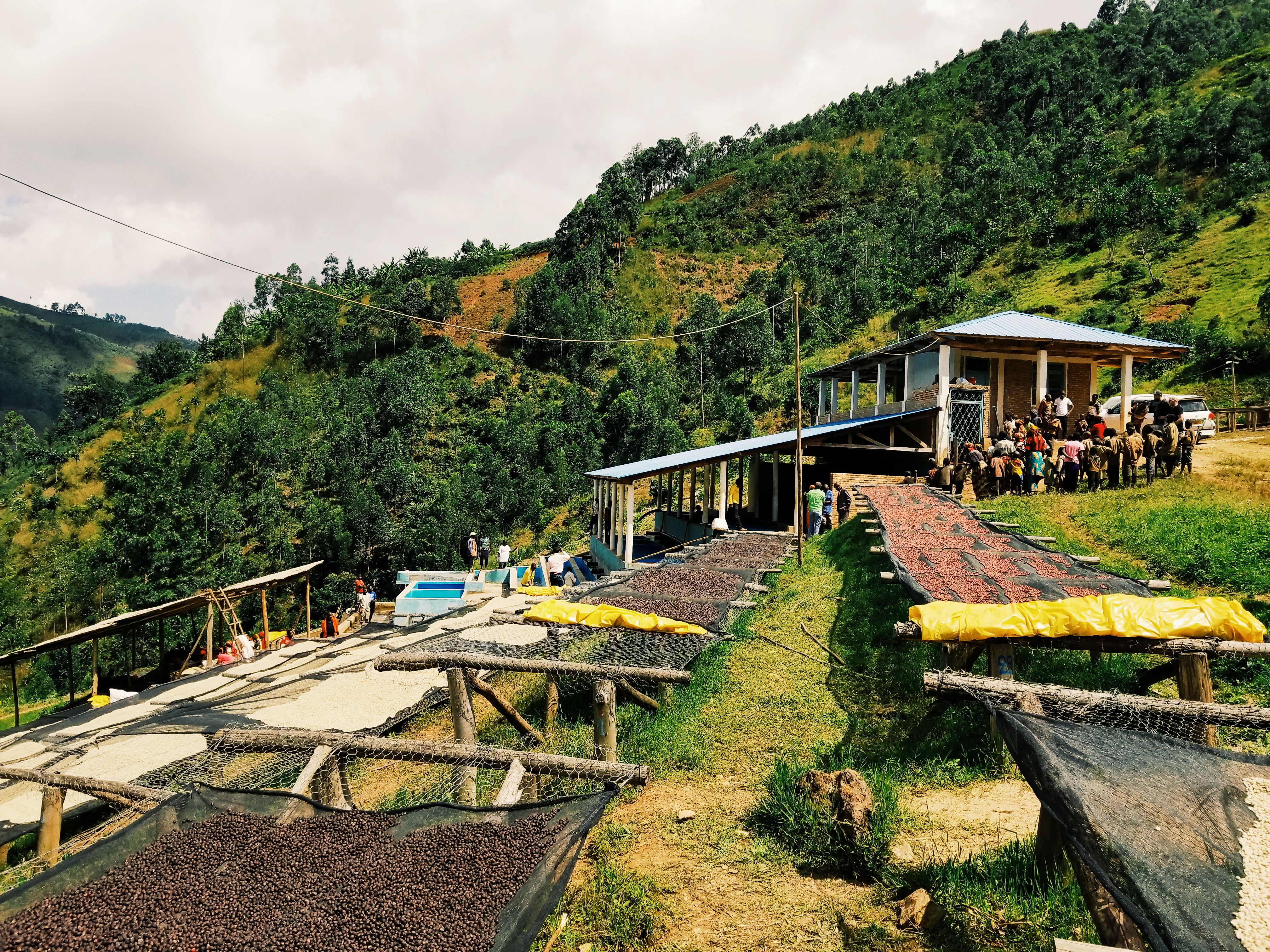

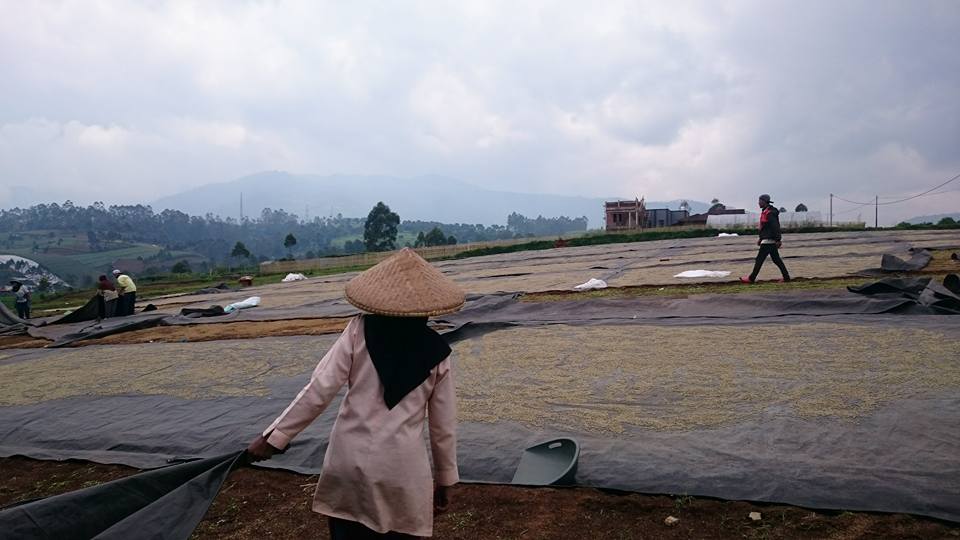
0 Comments